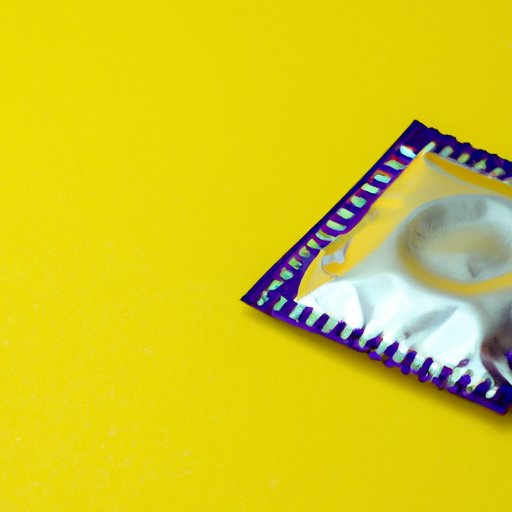
Introduction
Contraception is an important topic for people of all ages and genders. When it comes to preventing pregnancy, there are many options available, each with its own set of benefits, risks, and effectiveness rates. One method that many people have heard about is the pull-out technique, also known as withdrawal. This involves pulling out the penis before ejaculation as a way to prevent sperm from being released into the vagina. In this article, we will explore the truth, risks, and myths surrounding the pull-out method and help you make informed decisions about contraception.
The Truth About Pulling Out: Can You Really Get Pregnant?
The pull-out method is a type of contraceptive where the man withdraws his penis from the vagina before ejaculation. It is important to note that this method is not 100% effective in preventing pregnancy. According to Planned Parenthood, up to 22 out of 100 people who use withdrawal as their only form of contraception become pregnant within a year. This is due to the fact that some sperm can be released into the vagina before ejaculation or during pre-ejaculation.
It is important to be aware of the potential risks and limitations of the pull-out method. For people who are looking for a more reliable form of contraception, there are alternative options such as condoms, hormonal birth control, and intrauterine devices (IUDs).
The Risks and Benefits of the Pull-Out Method
Like all forms of contraception, the pull-out method has both advantages and disadvantages. Some benefits of the method include the fact that it is free, does not require a prescription or medical intervention, and can be used at any time. However, there are also risks to consider. For example, this method does not protect against sexually transmitted infections (STIs) and can be difficult to use effectively if the man is not able to control his ejaculation.
It is important to note that the pull-out method is not recommended for everyone. It may not be the best choice for people who have irregular periods, have trouble tracking their ovulation, or are at risk of STIs. Additionally, using this method as a primary form of contraception can lead to stress and anxiety about pregnancy.
When Withdrawal Fails: What To Do Next?
If you have used withdrawal as a form of contraception and are concerned that you may have become pregnant, there are several options for emergency contraception. One of the most common forms of emergency contraception is Plan B, which can be taken up to 72 hours after unprotected sex. It is important to note that emergency contraception is not a substitute for regular contraception and should only be used in emergency situations.
If you do become pregnant despite using the pull-out method, it is important to seek medical attention and discuss your options with a healthcare professional.
Breaking Down the Myths About Pulling Out
There are many myths and misconceptions surrounding the pull-out method. One of the most common myths is that urinating before sex can eliminate any sperm in the pre-ejaculatory fluid. However, this is not true. Pre-ejaculatory fluid has been found to contain sperm in some cases, even after urination.
Another myth is that the pull-out method is not effective because it requires too much self-control. While the method does require self-control, it can be an effective option for people who are able to use it correctly and consistently.
The Pull-Out Method: Is It Worth the Risk?
Ultimately, the decision to use the pull-out method comes down to personal preference and individual circumstances. While this method is not 100% effective, it can be a good option for people who are looking for a non-hormonal, non-invasive form of contraception that can be used on an as-needed basis.
Before deciding to use withdrawal as a primary form of contraception, it is important to consider the potential risks and limitations of the method. Additionally, it is important to seek advice from a healthcare professional and consider alternative forms of contraception that may be more effective for your individual needs.
Conclusion
When it comes to preventing pregnancy, it is important to be informed about the different forms of contraception available. While the pull-out method can be a convenient and affordable option, it is not without risks and limitations. By understanding the truth, risks, and myths of the method, you can make an informed decision about contraception and take steps to protect your health and well-being.
It is important to remember that every individual’s circumstances are different, and there is no one-size-fits-all solution when it comes to contraception. By seeking professional advice and educating yourself about safe and effective options, you can make the best decision for your individual needs.




